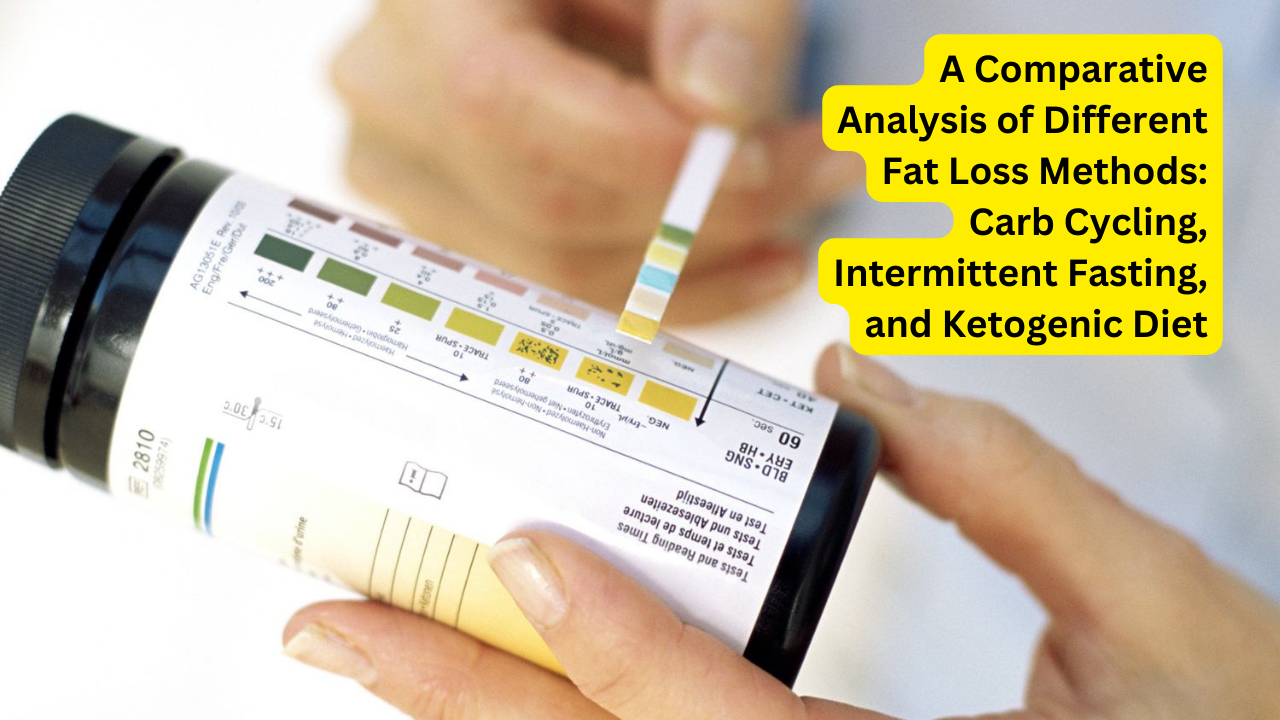Carb Cycling, Intermittent Fasting, and Ketogenic Diet

Carb Cycling, Intermittent Fasting, and Ketogenic Diet. When discussing weight loss strategies, one cannot ignore the significance of ketone bodies in urine. These compounds, including acetoacetate, beta-hydroxybutyrate, and acetone, are produced when the body breaks down fats for energy. They are particularly relevant in the context of the ketogenic diet, where the body enters a state of ketosis and relies on fat as the primary energy source. Detecting ketone bodies in urine is a clear indicator that the body is undergoing this metabolic process, which can be crucial for those aiming to monitor their fat loss journey.
Carb Cycling: Balancing Carbs for Effective Weight Loss
What is Carb Cycling?
Carb cycling is a dietary approach that alternates between high and low carbohydrate intake days. This method aims to maximize the benefits of carbohydrates while minimizing potential downsides. On high-carb days, you consume more carbohydrates to fuel intense workouts and replenish glycogen stores. On low-carb days, the intake of carbs is reduced to encourage the body to use stored fat for energy.
Advantages of Carb Cycling
- Enhanced Metabolic Flexibility: By regularly changing carbohydrate intake, the body becomes more efficient at switching between using carbs and fats for energy.
- Muscle Preservation: High-carb days help in maintaining muscle mass by providing necessary glycogen for muscle recovery and growth.
- Sustainable Weight Loss: Alternating carb intake can make dieting more manageable, reducing the likelihood of burnout and dietary fatigue.
Limitations of Carb Cycling
- Complexity: This method requires careful planning and tracking of carbohydrate intake, which can be cumbersome for some individuals.
- Inconsistent Results: Not everyone responds to carb cycling in the same way, and it may take time to find the optimal balance for effective weight loss.
Intermittent Fasting: Timing Your Meals for Maximum Impact
What is Intermittent Fasting?
Intermittent fasting (IF) involves alternating periods of eating and fasting. Common patterns include the 16/8 method (16 hours of fasting and 8 hours of eating), the 5:2 method (five days of normal eating and two days of restricted calorie intake), and the Eat-Stop-Eat method (24-hour fasts once or twice a week).
Advantages of Intermittent Fasting
- Simplicity: IF does not require detailed meal planning or calorie counting, making it easier to follow for many people.
- Improved Insulin Sensitivity: Fasting periods can improve insulin sensitivity, helping to regulate blood sugar levels.
- Enhanced Fat Burning: During fasting, the body depletes glycogen stores and begins to burn fat for energy, promoting weight loss.
Limitations of Intermittent Fasting
- Hunger and Cravings: Fasting periods can be challenging, especially for beginners, leading to increased hunger and cravings.
- Potential Muscle Loss: Extended fasting without adequate protein intake can result in muscle loss, which may counteract weight loss efforts.
Ketogenic Diet: Embracing Fat for Fuel
What is the Ketogenic Diet?
The ketogenic diet is a high-fat, low-carbohydrate diet that shifts the body’s metabolism from using glucose to using ketone bodies for energy. By drastically reducing carb intake and increasing fat consumption, the body enters a state of ketosis, where it breaks down fats into ketone bodies, which are then used for fuel.
Advantages of the Ketogenic Diet
- Rapid Weight Loss: The ketogenic diet can lead to quick weight loss, especially in the initial stages, as the body sheds water weight and begins to burn fat.
- Reduced Appetite: High-fat foods can be more satiating, leading to decreased hunger and calorie intake.
- Improved Mental Clarity: Some individuals report enhanced cognitive function and mental clarity while in ketosis.
Limitations of the Ketogenic Diet
- Restrictive Nature: The ketogenic diet is highly restrictive, eliminating many carbohydrate-rich foods, which can be difficult to maintain long-term.
- Nutrient Deficiencies: The diet’s restrictive nature can lead to potential nutrient deficiencies if not carefully managed.
- Potential Health Risks: Long-term adherence to a ketogenic diet may pose health risks, including increased cholesterol levels and impact on heart health.
Comparative Analysis: Which Method is Best for You?
Tailoring to Individual Needs
Each weight loss method—carb cycling, intermittent fasting, and the ketogenic diet—offers unique benefits and challenges. The best approach depends on individual preferences, lifestyle, and specific health conditions.
Considerations for Exercise Habits
- Carb Cycling: Ideal for those with intense workout routines, as it provides necessary energy on high-carb days and promotes fat burning on low-carb days.
- Intermittent Fasting: Suitable for those who prefer a simpler dietary plan without the need for constant meal planning.
- Ketogenic Diet: Best for individuals who can adhere to a highly restrictive diet and are looking for rapid initial weight loss.
Dietary Preferences and Sustainability
- Carb Cycling: May be more sustainable for those who enjoy a variety of foods and can handle dietary fluctuations.
- Intermittent Fasting: Easier to maintain for those who prefer clear eating windows and do not want to restrict specific food groups.
- Ketogenic Diet: Requires a commitment to high-fat foods and a willingness to eliminate most carbs, which can be challenging for some.
Medical Considerations
- Carb Cycling: Generally safe but requires careful monitoring of carbohydrate intake.
- Intermittent Fasting: Should be approached with caution by individuals with certain medical conditions, such as diabetes.
- Ketogenic Diet: Not recommended for individuals with certain health issues, such as pancreatic disease, liver conditions, or lipid metabolism disorders.
Conclusion: No One-Size-Fits-All Solution
While each weight loss method has clear benefits, no single approach works for everyone. Personalized strategies, considering exercise habits, dietary preferences, and medical conditions, are essential for effective and sustainable weight loss. As research continues to evolve, these strategies not only address weight loss but also contribute to broader health and well-being.




